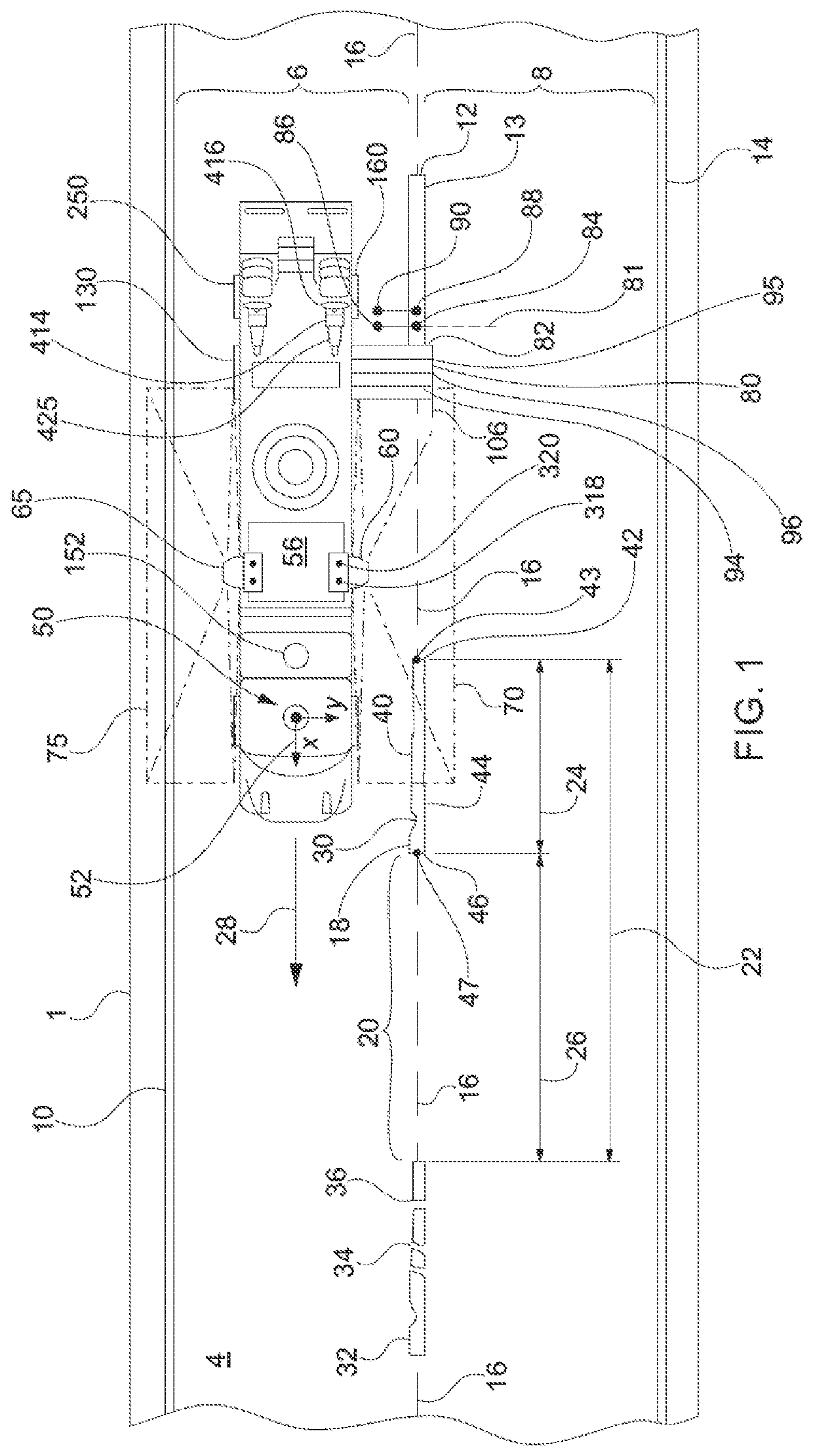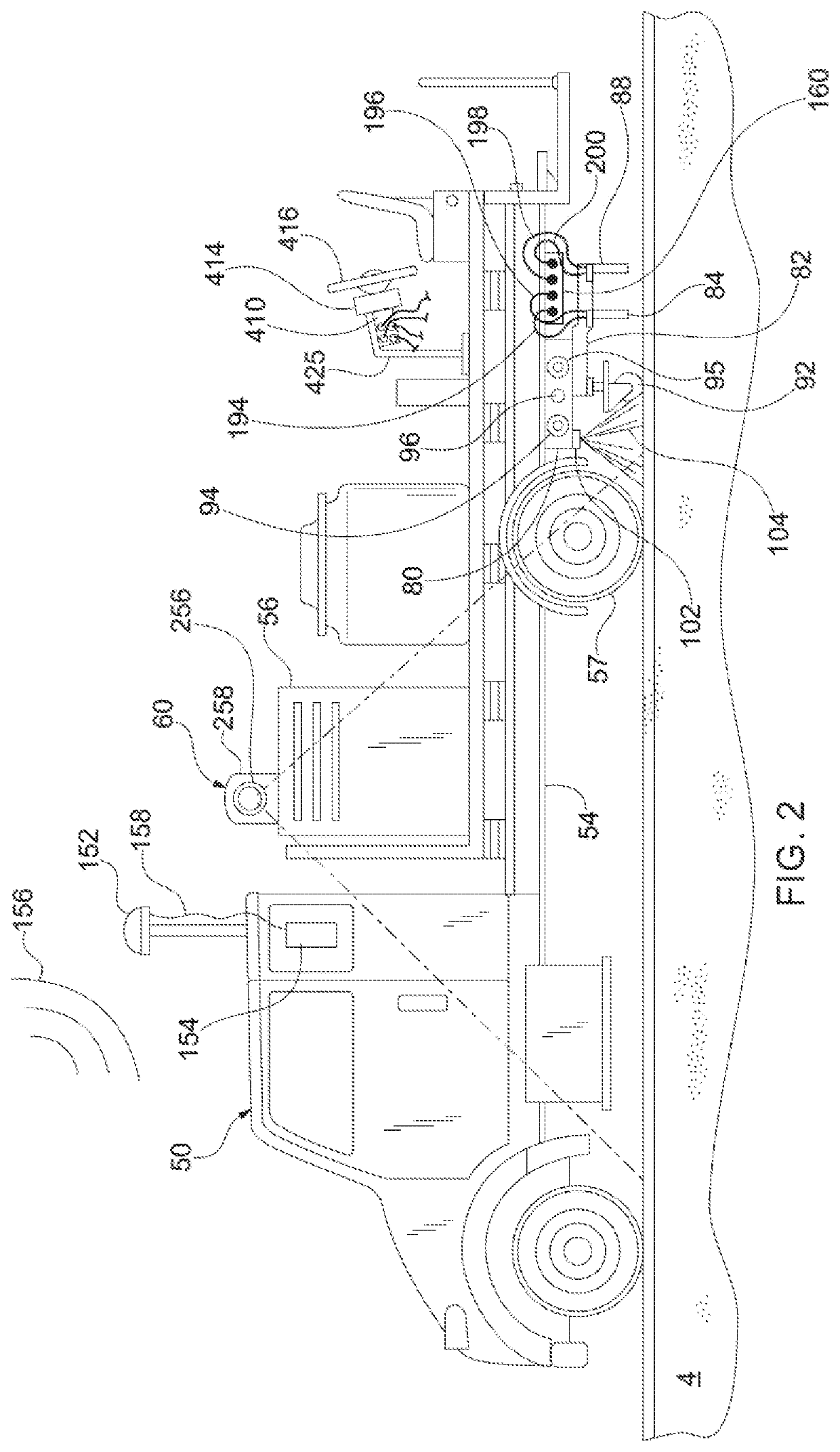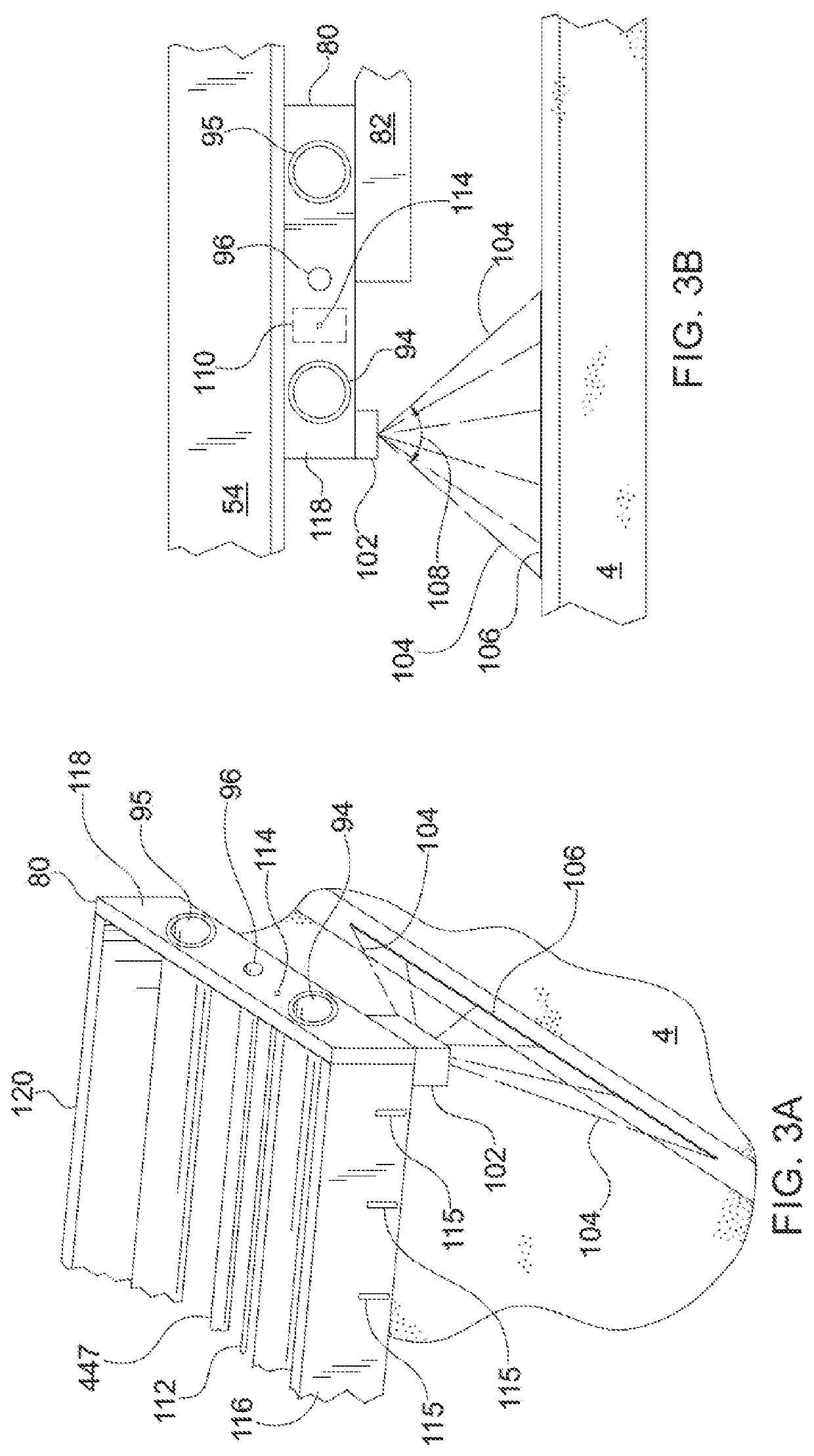All the above roadway mark materials are effective for visibly defining the roadway lane demarcation marks during
daytime and clear weather conditions but are less effective during wet and nighttime conditions.
Because the larger
diameter beads protrude significantly above the
road surface, however, they are more susceptible to degradation over time.
This initially
high contrast differentiation tends to degrade over time, however, for various reasons.
For example, the actual binder material which defines the visible reflective shape of the roadway mark (usually rectangular shaped) may become worn with vehicular traffic and the passage of time, and may further become discolored because of lengthy
exposure times to ultra-violet
radiation from the sun.
Further, black tire scuff marks may occur on the surface of the roadway mark further degrading mark
visibility.
Differences in the coefficients of
thermal expansion between the binder material and roadway surface may also cause a
physical separation between them further degrading the ability to maintain a consistently visible roadway mark.
Seasonal roadway temperature variations over time may cause
cracking and peeling of the roadway mark further degrading the effectiveness of the marking.
The reflective elements for the liquid,
thermoplastic, and tape applications which are installed along with their respective binder may wear away quickly as the result of frictional contact between the tires of passing traffic and the applied roadway mark.
Usually, the exact positions of the roadway lanes, and therefore the roadway marks defining those lanes, are not visible during the
snow-plowing process thereby increasing the probability that the marks will be accidentally scraped and removed by the plow.
This particular
reapplication process is costly and inefficient because it requires use of a dedicated and expensive piece of equipment (commonly referred to as a “
grinding truck” or a “water blaster”) or a combination of marking-removal machines, to first remove the pre-existing worn lines, and then additional time and labor costs are required to again lay out a new roadway mark path and apply the new roadway marking.
Furthermore, the motoring public is inconvenienced as the result of traffic lane closure for both the removal and the subsequent
layout and
reapplication of the roadway marks.
This is not the case, however, for repetitive skip line patterns where the operators must continuously align the dispensing hardware over the pre-existing roadway mark and simultaneously monitor and adjust the paint
truck dispensing
system to ensure that the newly applied marking accurately reproduces the existing skip line pattern by periodically manually correcting the timing of when to begin, and when to end, the dispensing of the roadway mark material.
Trailing edge positional errors between the pre-existing mark and the newly applied mark may occur because of variations in truck speed, dispensing valve turn-off delays, and operator
response time.
A slower moving truck increases the amount of time necessary, however, to re-apply the mark material over the pre-existing mark.
Although successful in dispensing new roadway mark material on top of a pre-existing roadway mark, the manual process is prone to
human error based upon the fact that the operator must simultaneously laterally align the dispensing hardware and control the timing when to begin and end the dispensing of mark material.
In addition, the operator cannot accurately determine the
actual length of the
line segment and will usually dispense new roadway mark material over the entire length of the visible pre-existing line segment without regard to the original line segment specification.
With a manually controlling restriping process, the operator may overly dispense and restripe the entire 17-foot (520 cm) line segment even though the original specification calls for a 15-foot (450 cm) line segment, thus unnecessarily
wasting a good percentage of roadway mark material.
For example, increases in tire temperature during the restriping process may cause a change in
tire pressure.
Other factors may also affect the distance travelled per tire revolution such as tire wear and tire deflation caused by leaking or inoperable tire valves.
Errors caused by changes in the distance-to-pulse ratio during the restriping process, or by using previous and not current ratios, are cumulative and cause positional errors in the painted line segment and gap lengths.
This dispensing cycle error is cumulative and continues throughout the restriping process, and if not quickly corrected results in an unacceptable restriped roadway mark pattern.
The positional accuracy of the partially automated restriping process is therefore dependent upon the accuracy and consistency of the calibration procedure and again on the judgment of the material-dispensing operators, and therefore is prone to errors.
Furthermore, the requirement that the operators have an unobstructed view of the roadway mark for both laterally aligning the
carriage over the roadway mark and for advancing or delaying the timed dispensing cycle usually places the operators towards the rear of the paint vehicle and therefore in harm's way of high-speed passing or common lane traffic.
Documented operator injuries have occurred because of collisions between the rear portion of the paint truck and passing or common lane traffic.
Although this patent attempts to eliminate the operator from the rear of the paint truck, maintaining an accurate dispensing position over the pre-existing roadway mark is difficult because of the simultaneous tasks required of the driver to properly dispense the roadway mark material at exact times while maintaining both the truck and roadway material dispensing hardware alignment with the current roadway mark path, and also attempting to control the position of the paint truck along the pre-existing roadway mark path.
This situation rarely occurs because traffic has diminished the optical distinguishing characteristics of the previously applied mark or has completely removed the mark from the roadway surface.
These apparatus work well if the old-line marking is detectable by the marking
detector but fail if some of the old-line marking has been completely obliterated along the current roadway mark path.
None of the prior art addresses all these requirements.
 Login to View More
Login to View More  Login to View More
Login to View More 


